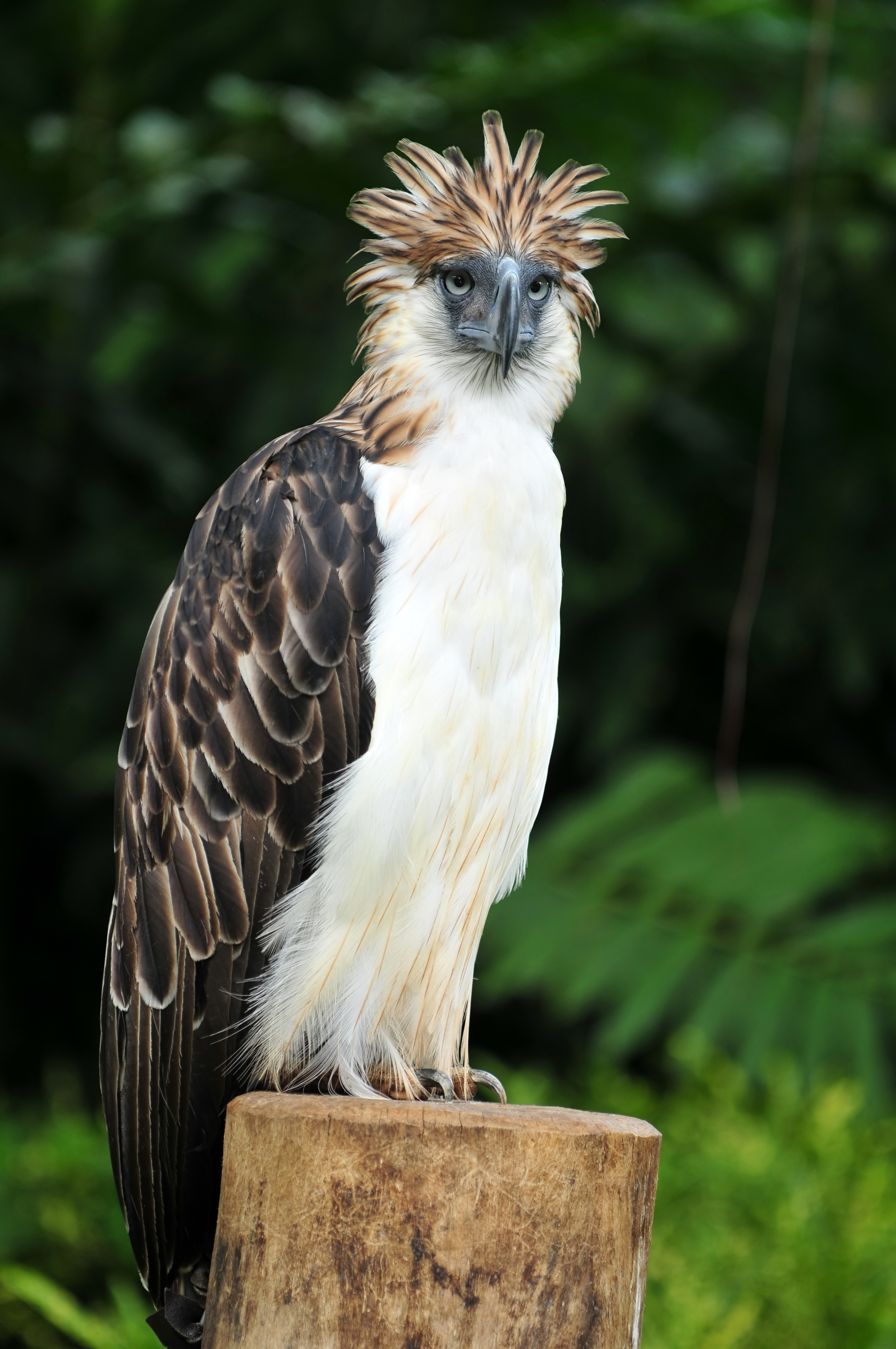Philippine eagle is a large bird of prey found only in dense forests on the Philippine islands of Leyte, Luzon, Mindanao, and Samar. It is also called the monkey-eating eagle. It is the national bird of the Philippines. The Philippine eagle is mostly mottled brown with white on its underside. The bird is easily recognized by its huge talons; large, strongly curved blue and black beak; grayish-blue eyes; and distinctive crown of brown and white feathers on the head.

The Philippine eagle is one of the largest and most powerful raptors (birds of prey) in the world. Adult Philippine eagles stand about 3 feet (1 meter) tall and have a wingspread up to 7 feet (2.1 meters). Among eagles, only Steller’s sea eagle of Siberia and the South American harpy eagle are larger. Philippine eagles prey on such mammals as squirrels, civets, flying lemurs, and monkeys. They also prey on other birds and on snakes. Philippine eagles are apex predators in their habitat—that is, they are the predator at the top of the food chain and are not preyed upon by any other animal.
Adult Philippine eagles form lifelong pairs that hunt and defend a forest territory. They build large nests high in old trees in the dense forest. Every two years, after courtship and mating, the female eagle lays a single egg. Both parents spend time incubating (sitting on) the egg, which hatches after about 60 days. The female eagle usually remains by the nest with the chick for the first few weeks, while the male hunts and brings food. A young eagle will stay near the nest with the parents for about two years. Philippine eagles do not become fully mature until they are 5 to 7 years old. Philippine eagles may live 40 or more years in captivity.
The Philippine eagle is one of the most critically endangered birds in the world. The birds are protected by law, but many birds are shot or trapped illegally for their feathers. Deforestation, illegal logging, and climate change also threaten Philippine eagle populations.
